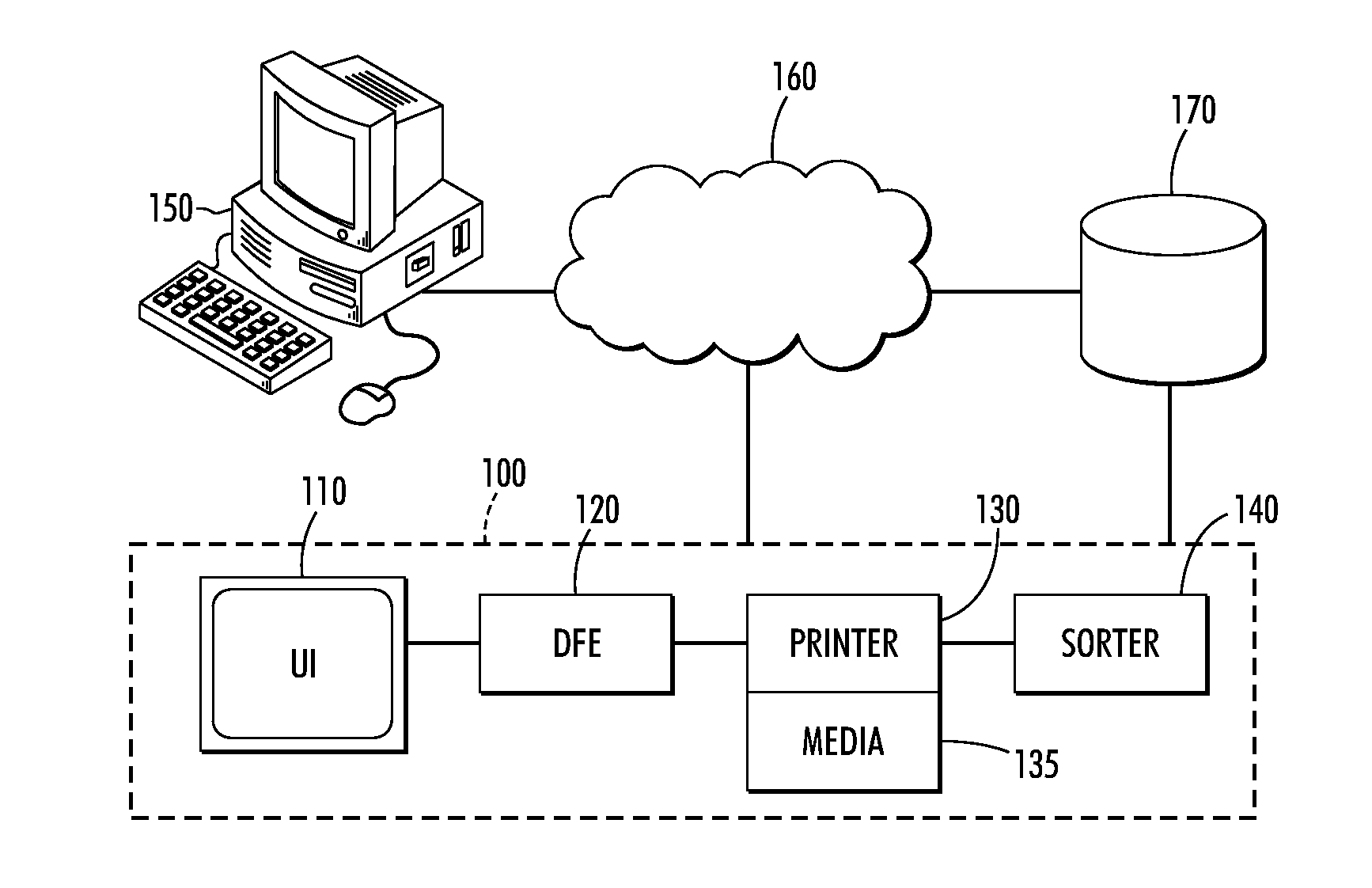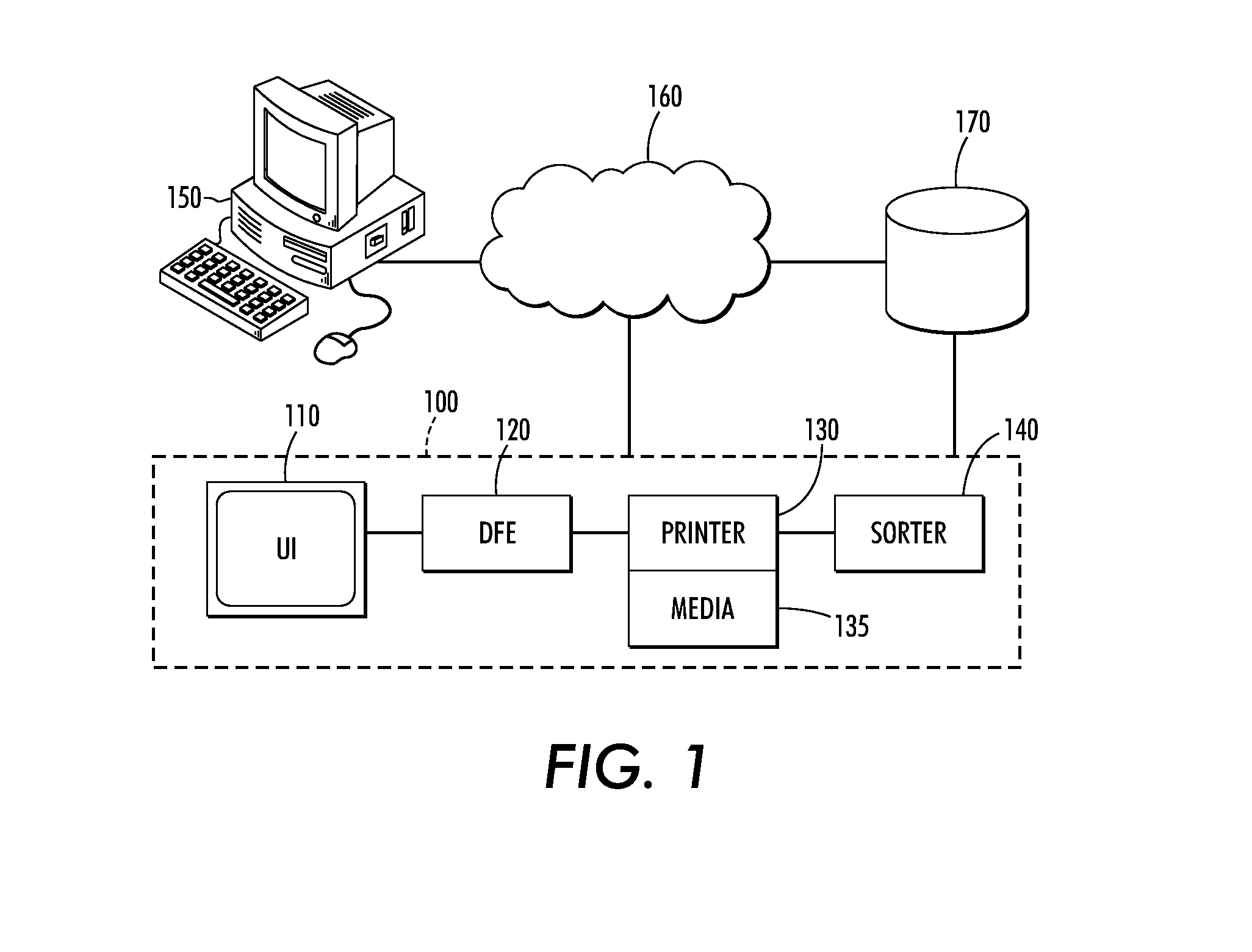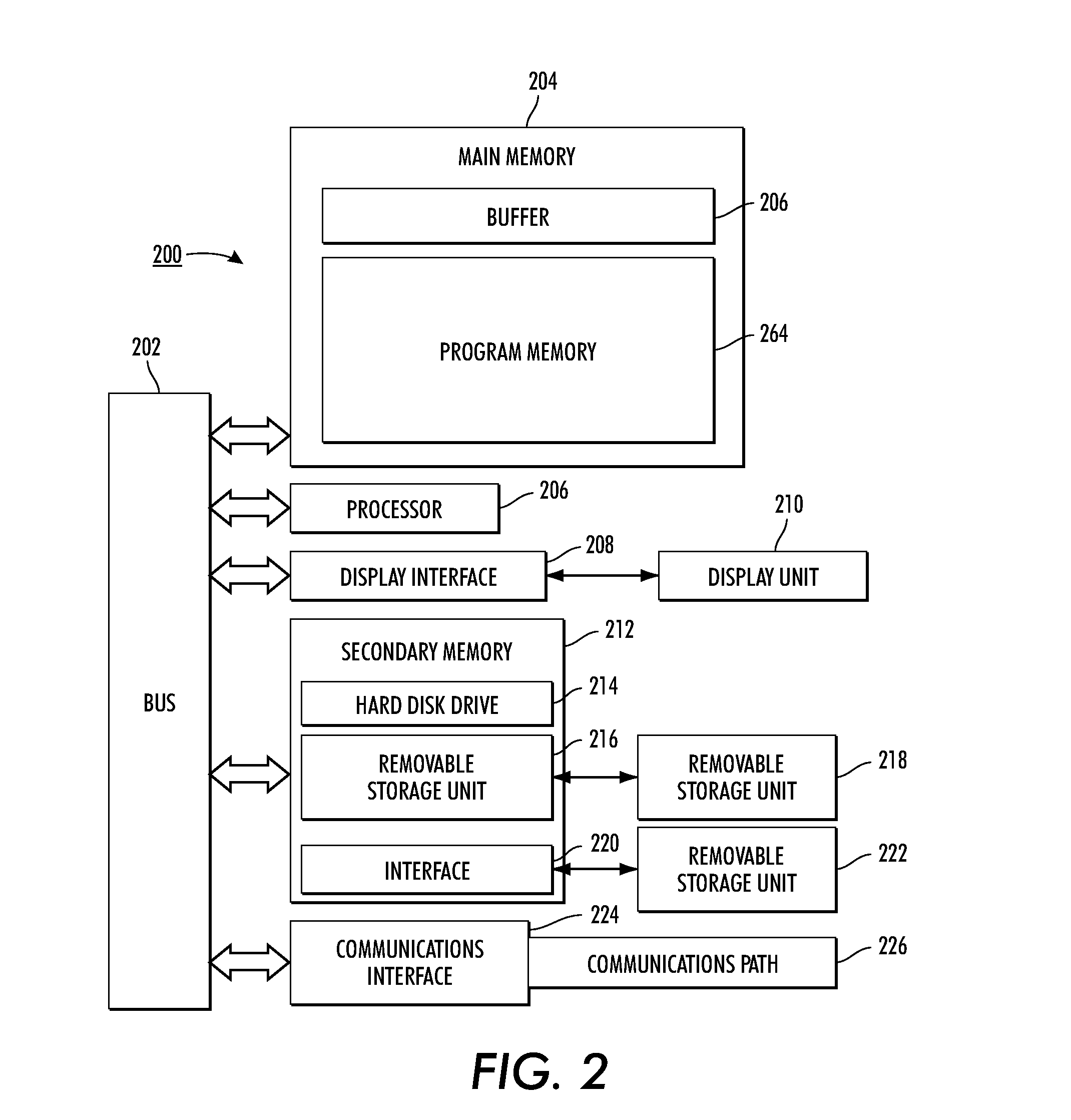Method of creating non-patterned security elements
a security element and non-patterned technology, applied in the field of creating non-patterned security elements, can solve the problems of affecting the design of several designs, the use of variable data printing arrangements, and the difficulty of special inks and materials to incorporate into electro-photographic or other non-impact printing systems, etc., to achieve the effect of minimizing calibration errors, maintaining color look and feel, and sensitive to calibration precision
- Summary
- Abstract
- Description
- Claims
- Application Information
AI Technical Summary
Benefits of technology
Problems solved by technology
Method used
Image
Examples
experimental verification
[0051]Based on an exemplary Printer Model, we derived at a set of RGB to CMYK1 and CMYKN values representing minimal and maximal gray component replacement. Table 1 shows a portion (shown range is 91-87) of a list sorted by |K1−KN|. For the exemplary Printer Model we printed and examined ΔK numbers in the range of 150 (maximal K difference) to 69 (296 patches), under the assumption that at a ΔK of 69 we would still be dealing with a good IR signal at about 25% of the maximum dynamic range. The selected number of patches can be easily handled for visual examination.
TABLE 1LabC1M1Y1K1C2M2Y2K2370516815517339997396130448−915715810601021005390357−4167176141389510167128418−91621641129106102559936−7−1190147158371325985126340−5185165144411208468131507213814112707183718948−891611201663108521039347−1571771141710132401098945−89166124171121115410610149−110147130163287681039146−110151135169118970105994477144154157167490941044214−71481731096851195695357216217216045849883133431−1017114910931258756...
PUM
 Login to View More
Login to View More Abstract
Description
Claims
Application Information
 Login to View More
Login to View More - R&D
- Intellectual Property
- Life Sciences
- Materials
- Tech Scout
- Unparalleled Data Quality
- Higher Quality Content
- 60% Fewer Hallucinations
Browse by: Latest US Patents, China's latest patents, Technical Efficacy Thesaurus, Application Domain, Technology Topic, Popular Technical Reports.
© 2025 PatSnap. All rights reserved.Legal|Privacy policy|Modern Slavery Act Transparency Statement|Sitemap|About US| Contact US: help@patsnap.com



